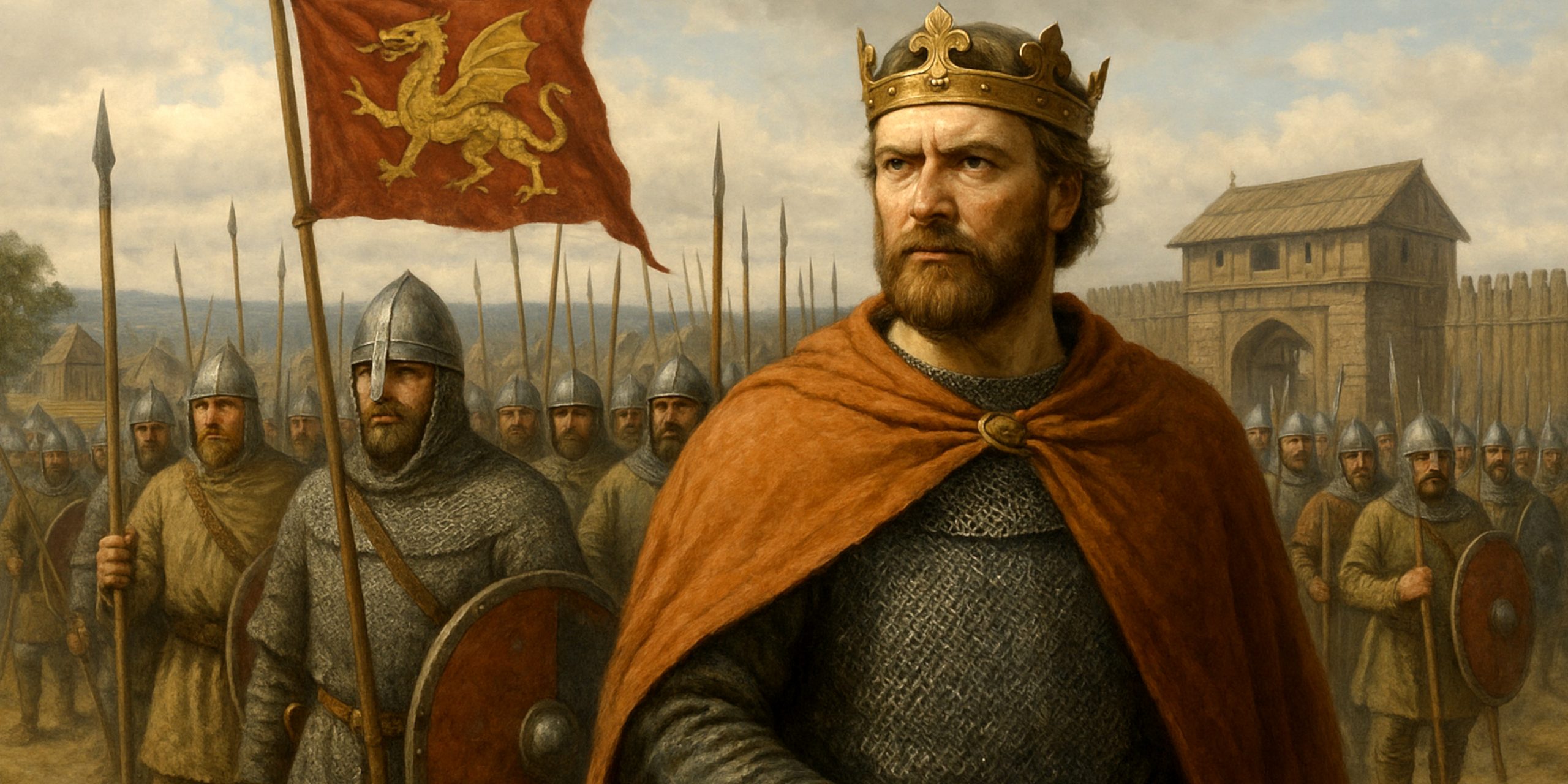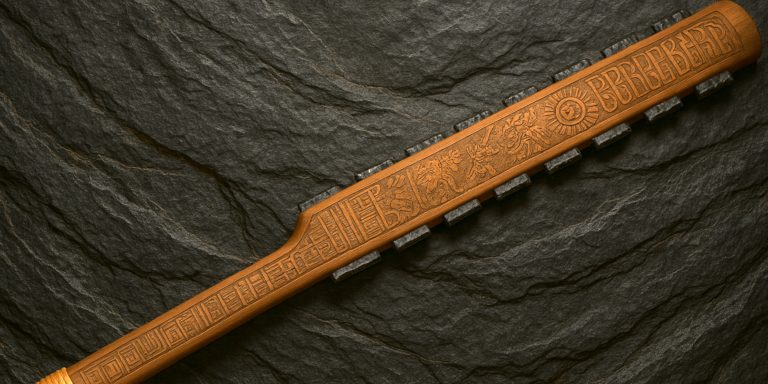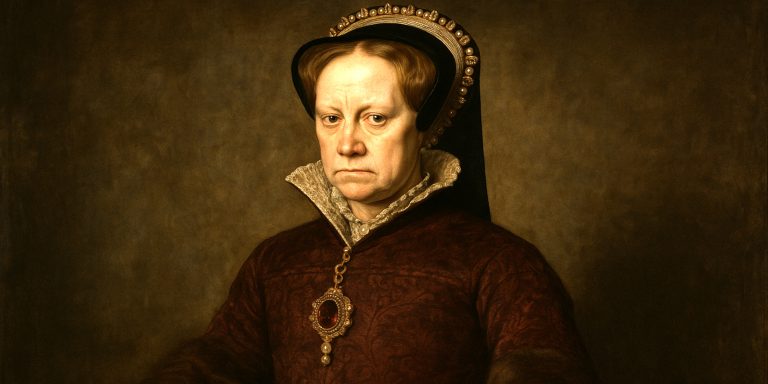
Edward the Elder is often overshadowed by his more famous father, Alfred the Great, and by the mythic glow surrounding his grandson, Æthelstan. Yet, if one traces the emergence of a united English kingdom, Edward stands as the pivotal bridge. His reign from 899 to 924 was not merely one of maintenance but of consolidation and expansion, blending military grit with shrewd administration. If Alfred dreamt of England, Edward began to make it real.
What strikes me most about Edward is his subtlety. He was not flamboyant, nor especially romanticised by chroniclers. He was, rather, a relentless, capable ruler, a man who understood that unity required as much fortification as inspiration.
Arms and Armour
Edward’s armies were heirs to the late Anglo-Saxon military traditions that had hardened under decades of Viking assault. The weapons and armour of his day were practical, well-forged, and unmistakably English in character.
Weapons likely used by Edward’s troops included:
- Sword: The spatha-like Anglo-Saxon sword, often pattern-welded with a lobed or trilobate pommel. The hilts bore simple ornamentation of silver or copper alloy.
- Seax: The short fighting knife that remained a signature sidearm.
- Spear: The most common weapon, used by both levied farmers and professional warriors.
- Shield: Round, of linden wood, rimmed with leather and centred on an iron boss.
- Bows: Short self-bows, rarely decisive but useful in skirmishes.
Armour and Protection:
- Chainmail hauberks, knee-length and with short sleeves, were standard among Edward’s thegns.
- Helmets were conical or rounded, fitted with nasal guards.
- Ordinary soldiers relied on padded leather jerkins or thick woollen tunics.
One suspects Edward’s army had a greater logistical sophistication than his father’s. The network of burhs (fortified towns) built under Alfred was expanded and strengthened under Edward, giving his forces not only refuge but a strategic skeleton across southern England.
Battles and Military Acumen
Edward’s reign was defined by methodical warfare and territorial reclamation. He was no rash field commander but a strategist who understood defence, supply, and the value of patience.
Key Battles and Campaigns:
| Year | Battle / Campaign | Opponents | Outcome | Notes |
|---|---|---|---|---|
| 899–902 | Consolidation of Wessex | Danish warlords | Victory | Quelled revolts that followed Alfred’s death. |
| 910 | Battle of Tettenhall | Northumbrian Danes | Decisive victory | Broke Viking power in Mercia and the Midlands. |
| 917–918 | Reconquest of East Anglia | Danes of Cambridge & Northampton | Success | Retook key territories through sieges and burhs. |
| 920–924 | Campaigns into Northumbria | Norse rulers | Mixed | Pushed English influence north to the Humber. |
Edward’s coordination with his sister, Æthelflæd, Lady of the Mercians, was remarkable. Between them, they stitched together Wessex and Mercia through a combination of fort building, diplomacy, and sheer persistence.
He had no need to win every battle; he won the map instead. His campaigns ensured that when his son Æthelstan inherited the throne, England was more or less whole.
Military Reforms and Organisation
Edward refined the fyrd system, ensuring that garrisons could rotate service so fields were not left fallow. He fortified towns such as Oxford, Hertford, and Towcester, and reorganised Mercia’s defences under his overlordship.
He also promoted loyalty through land grants tied to service. This pragmatic form of proto-feudalism hints at how early English kings learned to balance obligation with opportunity.
In my view, Edward’s genius lay not in battlefield brilliance but in his grasp of the military economy of early medieval England. He turned Alfred’s defensive war into an offensive policy of reclamation.
Where to See Artefacts from His Reign
Despite the scarcity of artefacts directly linked to Edward himself, the material culture of his reign survives in fragments that paint a vivid picture of late ninth- and early tenth-century England.
Key Sites and Artefacts:
| Location | Artefact / Exhibit | Notes |
|---|---|---|
| British Museum, London | Silver pennies of Edward the Elder | Beautifully struck coins showing the king’s portrait and mint marks from Winchester and Canterbury. |
| Ashmolean Museum, Oxford | Anglo-Saxon weapons and armour fragments | Representative of the arms used by Edward’s warriors. |
| Winchester Cathedral | Mortuary chests (bones possibly of Edward and Alfred’s line) | The cathedral remains a focal site for West Saxon royal burials. |
| St Mary’s Church, Winchester (Old Minster site) | Archaeological foundations | Likely site of Edward’s burial, now part of the cathedral complex. |
Latest Archaeological Findings
Recent excavations across Wessex and Mercia have illuminated Edward’s reign as one of unprecedented infrastructural growth.
- Burh Fortifications: At sites like Wallingford, Wareham, and Buckingham, archaeologists have traced the expansion of fort walls and ditches dating precisely to Edward’s campaigns of the 910s.
- Coin Hoards: Several hoards, such as the Lenborough Hoard (Buckinghamshire, 2014), include coins from Edward’s minting period, revealing stable and widespread monetary circulation.
- Settlement Patterns: New lidar mapping suggests that Edward’s burhs often became enduring market centres, shaping England’s medieval urban network.
Perhaps the most compelling theory is that Edward’s reign marks the true birth of England as a political geography. Archaeology supports what the chronicles only hint at: a kingdom emerging from a federation of fortified communities.
Legacy
Edward the Elder lacks the mythic glow of Alfred or the saintly polish of later kings, yet his fingerprints lie across English history. His legacy is found not in a singular triumph but in the long endurance of his policies.
He was pragmatic, iron-willed, and quietly ambitious. One imagines a man of fewer words than his father, but with the same granite conviction. Without Edward’s steady hand, Æthelstan could never have been “King of all the English.”
As a historian, I find Edward fascinating precisely because he is so unromantic. He reminds us that the making of nations is rarely the work of visionaries alone, it requires administrators, engineers, and commanders who understand the slow grind of governance and the art of fortification.
Watch thje documentary:



